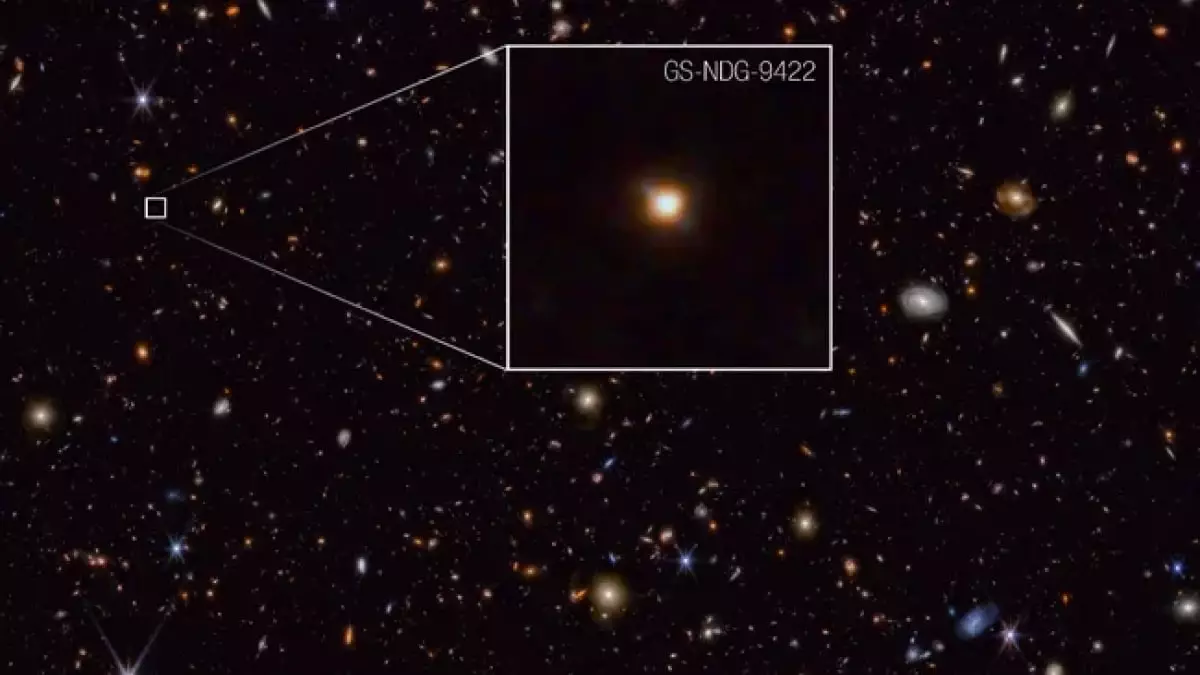The James Webb Space Telescope (JWST) has reached a significant milestone in astrophysics by uncovering a galaxy that offers unprecedented insights into the universe’s formative years. Estimated to have formed approximately one billion years after the Big Bang, this distant galaxy serves as a vital puzzle piece in understanding the chronology of cosmic evolution. As astronomers utilize the advanced capabilities of JWST, the stark differences in galactic properties shed light on a previously obscured narrative about the early universe.
Gas Dominance Over Stars: A Surprising Phenomenon
One of the most captivating revelations from this discovery is the unique characteristic of gas clouds dominating the galaxy’s luminosity, overshadowing its stellar constituents. Typically, stars are expected to shine more brightly than their surrounding gas, but this particular galaxy defies that norm. The gas clouds are so intensely luminous that they create a new perspective on stellar formation and interaction, suggesting that the dynamics of the early universe were not as straightforward as previously believed. This phenomenon compels researchers to reconsider models and hypotheses regarding star formation in primordial environments, challenging existing theories about how these early structures developed.
The Temperature Anomaly of Early Stars
The stars identified within this galaxy are intriguingly hotter than those found in contemporary galaxies, yet they are distinct in their composition. While modern stars are often enriched with a variety of heavier elements due to cosmic evolution, the hotter stars in this ancient galaxy still exhibit heavier elemental signatures. This discrepancy raises essential questions about how the very first stars transitioned from mere hydrogen and helium to more complex forms, marking a significant evolutionary leap in cosmic history.
The implications of this discovery extend far beyond a singular event, as it signifies the potential for JWST to reveal more galaxies from this turbulent period in time. Each new find can contribute layers of understanding to how galaxies formed in the aftermath of the Big Bang, or how elements from earlier stars seeded subsequent generations of stars and galaxies. This ongoing investigation aligns with the mission objectives of the JWST to enhance our grasp of cosmic history and the mechanics driving evolution at large.
As astronomers delve deeper into these ancient cosmic mysteries, they are optimistic that the JWST will continue to revolutionize our understanding of the universe. Given its unparalleled observational power, scientists are poised to explore regions that remain largely uncharted in the history of astronomy. The knowledge gleaned from this distant galaxy not only informs us about our own origins but could redefine our understanding of cosmic evolution in its entirety.
Ultimately, the journey of discovery initiated by the James Webb Space Telescope demonstrates that we are merely scratching the surface of cosmic history. Each discovery continues to illuminate our understanding of how galaxies, stars, and the broader universe emerged from the chaotic brilliance of the early cosmos. Through this exploration, humanity embarks on a path to learn the fundamental truths about existence and our place in the grand tapestry of the universe.

Leave a Reply